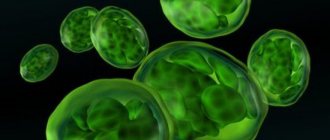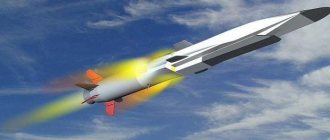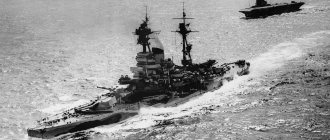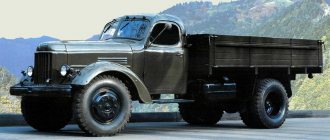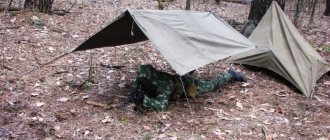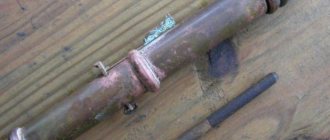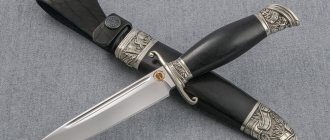The development of chemistry in the mid-19th century provided the military with a variety of explosives to replace black powder. Some substances are forgotten, new ones appear, but among them there are also “long-livers”. There are types of explosives that almost everyone knows about, as they say, “from small to large.”
A prominent representative of the latter group is trinitrotoluene, or tol, or TNT in common parlance. The TNT formula, initially secret, at the beginning of the 20th century became an open secret “a secret for the whole world.” During both world wars, the world's armies mainly used this explosive.
Creation of TNT
In 1863, chemist Julius Wilbrandd, working at the University of Göttingen, obtained an interesting result during one of his experiments with coked coal residues and oil. The resulting composition burned perfectly, emitting a bright flame and a lot of black smoke. Wilbrat dubbed his composition trinitrotoluene, but the resulting substance was forgotten for several decades.
In the early 1890s, the composition had to be remembered in connection with the development of the armed forces. The explosives that were in service with the armies of the world at that time had many disadvantages. Dynamite is highly sensitive, and equipping ammunition with it is dangerous for the factory workers themselves, not to mention the troops, and there was no need to even think about transportation during hostilities.
Hexogen and picric acid are also extremely sensitive, melinite enters into active contact with the metal of the shell of the projectile, explosives based on nitrate and ammonia are hygroscopic and quickly fail.
Compared to these substances, trinitrotoluene was almost an ideal explosive, and the development of the oil industry ensured its rapid spread.
In 1891, industrial production of the substance began, but only in 1902 was it possible to partially replace picric acid in the ammunition of the German armed forces.
The chemist Heinrich Kast played a major role in this, essentially completing Wilbrandt’s work and making it possible to produce trinitrotoluene on an industrial scale. By the way, the name TNT was invented in order to confuse Russian and other intelligence services, which were actively looking for what the German chemical industry was doing. The origin of the word is simple, it is a shortened form of the full name of the explosive.
It is impossible to hide an awl in a bag, so already in 1909, this secret new explosive began to be produced in Russia at the Okhtinsky plant. The First World War was marked by the equality of picric acid and tol as explosives, but in the post-war period and during the Second World War, TNT became the main explosive on the planet.
TNT production has varied greatly over time.
Initially, toluene, a product derived from petroleum, was nitrated in three stages, followed by purification and crystallization using ethyl alcohol. The labor-intensive process, which involved valuable, “scarce” raw materials, was changed in 1932-1933.
Modernization made it possible to use alcohol for more important needs; it was replaced with acid. The fact that the production of explosives was intermittent was greatly hampered. In 1936, a technology for the production of continuous trinitrotoluene in four phases was tested and adopted. In the post-war period, new methods were created for the continuous production of TNT for the army and industry.
Their peculiarity was the use of concentrated acids. In this, the domestic industry was seriously ahead of its Western competitors, since in Germany, England, and the USA, the production of explosives was not as cheap and efficient as in the USSR, and, as a rule, was of an intermittent type.
This is interesting: Collective means of protection
Dynamite
In 1847, Italian chemist Ascanio Sobrero synthesized a liquid that made it possible to “levitate” heavy objects. In the world it is called “nitroglycerin”. But Sobrero had no idea what serious consequences his discovery would have for the whole world. The resulting liquid exploded from almost anything: heat, impact or friction. Improper storage also led to an explosion.
After synthesis, it was better to immediately put the substance into use. And there was a lot to do. Industrial development was on the agenda: humanity needed ore, tunnels, roads, pits, so the magic liquid came in very handy. And how wonderful it would be if everything remained like this, but alas, alas...
According to legend, once, when Alfred Nobel was transporting nitroglycerin, some of it spilled out of the bottle and was absorbed into the ground - with it, in the absence of bubble wrap, they covered the bottles in the cart. After experimenting with the resulting mud, the famous inventor and philanthropist discovered that the resulting mixture was almost as powerful as nitroglycerin in terms of explosion power, and at the same time it could be stored, thrown, cut, transported - or even sculpted into pots, as long as it was not put in an oven.
Nobel himself vehemently denied this story - they say that something had spilled on me!
If he had been so careless about nitroglycerin, then instead of the Nobel Prize we would now have exclusively the Darwin Prize.
But it is impossible to erase from the people's consciousness that which has a deep psychological basis - fear.
Nobel was a successful entrepreneur who established the production of nitroglycerin in Sweden and then abroad. Both governments and private individuals became its customers. But it was successful only in terms of income. But in terms of incidents, you can’t call him lucky...
Alfred had everything explode: factories, ships, laboratories. During one of the explosions, his younger brother was killed. People were afraid of unplanned detonations, states passed laws banning the production of nitroglycerin on their territory.
Therefore, in the minds of the average person, Nobel was something like Baphomet - a terrible satanic idol.
However, the inventor himself insisted that since 1864 he had been deliberately experimenting with the impregnation of various substances with nitroglycerin. One of them was siliceous earth - kieselguhr, and it was a success. So, through long work, Alfred Nobel invented dynamite in 1866.
The principle of the most famous explosive on the planet is simple: we take an absorbent substance, impregnate it with nitroglycerin, insert a capsule - and voila.
The invention was received with a bang. One of its variants was the so-called gelatin-dynamite, better known as “explosive jellies.” Due to the fact that it was relatively easy to synthesize nitroglycerin and nitrocellulose, Russian populist revolutionaries began to actively use this combination to produce their bombs - they were good chemists.
So, with explosive jelly of his own production, Comrade Kibalchich sent Emperor Alexander II to his forefathers (which in practice demonstrated the impossibility of destroying the monarchy by killing monarchs).
But all this is already a long story.
Physical and chemical properties of TNT
TNT is obtained by nitration of a substance such as tol. There are six isomers in total, which have the same formula, but different positions relative to the benzene ring, which leads to different chemical properties.
Basic chemical properties of TNT:
| solidification temperature | 85°С |
| melting temperature | 82°С |
| boiling temperature | 295°С |
| heat of fusion | 21.41 kcal/g |
| heat of crystallization | 5.6 kcal/mol |
| hygroscopicity | 0,05% |
| solubility - at water temperature 25°C/100°C | 0,02/0,15 |
Basic physical properties of TNT:
| state | hard |
| detonation speed (at a TNT density of 1.64 kg/m3) | 6.95 sec. |
| crushing effect according to Hess | 16 mm |
| crushing impact according to Cast | 3.9 mm |
| volume of gas formation during detonation | 730 l/kg |
| high explosiveness | 285 ml |
| sensitivity when falling (10 kg of TNT from a height of 25 cm) | up to 8% detonation |
| maximum shelf life | 25 years, after which sensitivity to detonation increases |
TNT Density
Density is the ratio of body mass to occupied volume. The density of the explosive is 1654 kg/m3.
Power
The power of a TNT explosion is measured in TNT equivalent. When TNT explodes, energy is released, which amounts to 4184 Joules or 1000 thermochemical calories per 1 gram of TNT.
Heat of explosion
The heat of explosion of TNT is the amount of energy released during explosive rotation. With an explosion of 1 kg of TNT, it ranges from 4100 to 4700 kJ.
Crushing impact
Crushing effect (brisance) is one of the characteristics of explosives, which determines the substance’s ability to have post-explosive effects in the environment. The brisance of TNT is 16.5 mm, which is an order of magnitude higher than other substances such as hexogen (4.2 mm) and octogen (5.4 mm).
States
TNT is an explosive that can be in four states:
- Scaled.
- Powdery . It is characterized by high sensitivity to external influences, primarily to fire.
- Pressed or cast. Capable of burning with a yellowish fire. Without a standard fuse or primer detonator, it will not explode. Characterized by high sensitivity to detonation.
- Melted. As in flaked TNT, this state of TNT is characterized by low susceptibility to detonation. In order for fused trinitrotoluene to work, intermediate detonators must be present. Pressed TNT is ideal for this purpose.
Description
- Trinitrotoluene is characterized by low sensitivity to external mechanical influences: shocks, bullets, sparks, friction.
- It is also immune to chemical influences.
- A kilogram of TNT can release 1010 kcal of energy.
- With a standard blasting cap, TNT reacts at a speed of 6900 meters per second.
- Trinitrotoluene does not react with wood, plastics, concrete, brick.
- Insoluble in water.
- After prolonged heating, wetting in water and melting, TNT is able to retain its explosive properties.
- Tends to darken when exposed to sunlight.
- Capable of burning as a result of exposure to an open source of fire. In this case, TNT burns with a yellowish flame with the release of soot.
- TNT can remain functional even after long-term storage. Various containment conditions (water, soil or ammunition casing) do not affect the explosive properties of trinitrotoluene.
TNT is the main explosive compound for military ammunition.
TNT is a chemical explosive that has become a staple in warfare. Almost all ammunition is filled with TNT: high-explosive shells, aviation fragmentation bombs and high-explosive anti-aircraft shells, anti-personnel and anti-tank mines of any design. The number of brands and units of this ammunition is countless. It is easier to name those that do not use TNT: thermobaric mixtures, thermite armor-piercing charges, volumetric explosion ammunition. Their share in the total production flow is very small, and more than 90% of all explosive ammunition continues to be filled with classic TNT.
Average parameters of army TNT
- Detonation speed 6700-7000 m/sec;
- Brisance according to Hess - 16 mm;
- The volume of gaseous products is 730 dm/kg;
- Flash point - 290 C;
- Density - 1633 g/l;
- Melting point - 80 C;
- No more than 4-8% explosions when falling 10 kg from a height of 25 cm;
- Guaranteed shelf life - 25 years. After it, sensitivity to detonation from impact increases.
The explosive substance TNT breaks down into carbon dioxide and nitric oxide. The oxygen balance of TNT is zero. A ton of TNT will emit less heat than a ton of dry firewood, but their burning rate differs tens of thousands of times.
300 kilograms of TNT will provide a blast wave damage zone with a radius of more than 50 m. The power drops according to the square of the distance, so the weight of the charge over a large damage zone is calculated accordingly.
Classification of explosive compounds
An explosive is a composition that can explode, that is, burn without oxygen at high speed. It is the burning rate that is the most important characteristic. It can be imagined like this: a long path of the test compound is laid out and set on fire. For example, along a gasoline path, the flame will “run” at a speed of tens of meters per second (varies depending on local conditions). If such a track is made of TNT, then the detonation speed will be more than 7000 m/sec. This is a huge value, unattainable for many other explosive compounds. This is why the TNT explosion is so powerful. For example, the mass of the charge in the legendary F1 grenade is only 60 g. In terms of volume, this is only three cartridges from a hunting rifle, but the energy is enough to destroy an entire car or neutralize an enemy in a large room.
All explosives are divided into initiating, high-explosive (high-explosive) and throwing. They all burn without oxygen. For initiators, the ability to ignite from certain factors is important: impact (firearm cartridges), contact with air, contact with water. Propellant explosives perform exactly the same function as gasoline in a car engine: they expand their volume quite sharply, but in such a way that the strength of the barrel is sufficient. Blasting compounds destroy metal.
TNT and other explosives
Many organic substances are susceptible to nitration (oxidation with nitric acid): ordinary cellulose, plastics, organic solvents. Of all of them, the organic solvent toluene was chosen. It is treated with nitric acid and the output is trinitrotoluene (TNT). The choice in favor of this substance was made precisely because of its stability and resistance to accidental explosion. The low cost of its production is also important.
The TNT equivalent has become a universal unit of measurement for the brisance of explosives. For TNT it is equal to 1. The limit for chemical explosives is the equivalent of 2. Ethylene glycol nitrate and Polyvinyl nitrate have it. Due to the extreme instability of these substances (liquids explode from a slight shock, shaking in a container, etc.), their use is possible only in a form highly diluted with plasticizers, and then their TNT equivalent will be the same as that of ordinary TNT.
Military use and explosive power
To date, trinitrotoluene is not used in its pure form as ammunition filling. Its qualities are complemented by other explosives to mutually improve the high explosive and other characteristics of the explosive.
Thus, hexogen and TNT increase the overall power, while TOL increases its safety.
Here is a small comparative table of tol and other explosives
| BB | Density | Explosion speed | Heat released by explosion |
| Tol cast | 1.45g/cm3 | 6500 m/s | 4.24 MJ/kg |
| RDX | 1.62g/cm3 | 8100 m/s | 5.54 MJ/kg |
| Pikrin | 1.76 g/cm³ | 7350 m/s | 7350 m/s 6.36 MJ/kg |
| Smoky gunpowder | 1.6—1.93 g/cm³ | about 3000 m/s | 2.79 MJ/kg |
A search is also underway for new types of explosives to replace the obsolete trinitrotoluene. Thus, the US Army has been using the IMX-101 composition, which is more stable and safe, for several years.
Soldiers found an unexpected use for explosives in the army. The fact is that in small portions, tol perfectly helps against fungal diseases.
Homemade ointments based on it have been made before, and will continue to be made as long as soldiers have problems with their legs.
This feature was used by doctors in an earlier time, but it quickly became clear that tol is toxic and its constant use can do more harm than good.
general characteristics
Opening the front door using a compact demolition charge (2008) Any explosive has the following characteristics:
- ability for exothermic chemical transformations
- ability to undergo self-propagating chemical transformation
The most important characteristics of explosives are:
- speed of explosive transformation (detonation speed or burning speed),
- detonation pressure,
- heat (specific heat) of explosion,
- composition and volume of gas products of explosive transformation,
- maximum temperature of explosion products (explosion temperature),
- sensitivity to external influences,
- critical detonation diameter,
- critical detonation density.
During detonation, the decomposition of explosives occurs so quickly (in a time from 10−6 to 10−2 sec) that gaseous decomposition products with a temperature of several thousand degrees are compressed in a volume close to the initial volume of the charge. Expanding sharply, they are the main primary factor in the destructive effect of the explosion.
There are two main types of action of explosives: high explosive (local action) and high explosive (general action).
Stability is essential when storing and handling explosives.
In applied fields, no more than two to three dozen explosives and their mixtures are widely used. The main characteristics of the most common of them are summarized in the following table (data given at a charge density of 1600 kg/m3):
| Explosive | Oxygen balance, % | Heat of explosion, MJ/kg | Volume of explosion products, m3/kg | Detonation speed, km/s |
| TNT | -74,0 | 4,2 | 0,75 | 7,0 |
| Tetryl | -47,4 | 4,6 | 0,74 | 7,6 |
| RDX | -21,6 | 5,4 | 0,89 | 8,1 |
| Ten | -10,1 | 5,9 | 0,79 | 7,8 |
| Nitroglycerine | +3,5 | 6,3 | 0,69 | 7,7 |
| Ammonite No. 6 | 0 | 4,2 | 0,89 | 5,0 |
| Ammonium nitrate | +20,0 | 1,6 | 0,98 | ≈1,5 |
| Lead azide | not applicable | 1,7 | 0,23 | 5,3 |
| Ballistic powder | -45 | 3,56 | 0,97 | 7,0 |
This is interesting: Customs benefits for rescue and other humanitarian operations
Content
- 1 Names and abbreviations
- 2 Composition
- 3 Characteristics 3.1 Sensitivity
- 3.2 Energy of explosive transformation
- 3.3 Detonation speed
- 3.4 Brisance
- 3.5 High explosiveness
- 3.6 Chemical resistance
- 3.7 Duration and conditions of operational state
- 3.8 Normal state of aggregation
- 3.9 Density
Names and abbreviations
- Trinitrotoluene;
- Tol;
- Trinit;
- Nitrotol;
- TNT;
- TNT;
- TNT;
- T.
History of the creation of TNT
| date | Event |
| 1863 | Creation of the first sample of TNT by the German scientist Julius Wilbrand |
| 1891 | First mass production and use in Germany |
| 1905 | The beginning of experiments on the creation of TNT in the USA and subsequent production |
| 1909 | Production of TNT in Russia and other countries |
The production of this explosive began only in 1891 in Germany, under the leadership of the famous German chemist Heinrich Kast.
Manufacturing and testing were carried out under the heading “Secret”, where the name TNT was subsequently awarded.
In 1905, the first large batch was produced in Germany, weighing more than one hundred tons. In the same year, the composition of TNT was discovered by American scientists who began work on the production of explosives in the United States. Then the secret was revealed to the whole world, after which production began in Russia and other countries of the world.
The most massive production of explosives was recorded in the USA in 1945, when more than 1 million tons were produced for military and industrial needs.
Features of use
TNT is a high-power explosive and has many advantages that set it apart from other substances. TNT can be in several forms:
- granular;
- pressed;
- cast.
All this allows it to be used not only in military affairs, but also in industry, for example, in mining. TNT also has a high level of safety at all stages of use and a long shelf life without loss of all explosive properties, which is up to 20 years.
TNT is often used in combination with other explosives, which improves quality, reduces sensitivity and achieves a constant state of other substances.
Main uses of TNT:
- warfare;
- industry;
- medicine.
Features of use
TNT is actively used both in military affairs and in industry. Moreover, it is used in different forms, both granulated (granulotol), and pressed, and cast.
Other types of explosives may be more powerful than TNT, but, as a rule, they have certain disadvantages. Hexogen, for example, is more sensitive, melinite reacts quite actively with metals and is poisonous, and ammonium nitrate explosives are hygroscopic.
, in general, is characterized by such high sensitivity that it is poorly suited for loading ammunition.
The main advantage of TNT is the safety of working with it, and this is true for all stages of its use. A stick of trinitrotoluene is no more dangerous than a wheel of cheese. In addition, this explosive is perfectly stored and retains its properties for decades. You can dig up a wartime shell and the TNT contained in it will be quite suitable for use. The guaranteed shelf life of this substance is twenty years.
In addition to all of the above, we can add that this explosive is perfectly fused with other types of explosives. Most often, TNT-based mixtures are used to equip ammunition. They largely neutralize the disadvantages of different types of explosives included in their composition. A mixture of TNT and hexogen reduces the sensitivity of the latter, making handling explosives safer. When mixed with ammonium nitrate explosives, TNT increases chemical resistance and reduces the hygroscopicity of the latter.
Currently, pure TNT is practically not used. Here are examples of explosive mixtures based on TNT:
- TGA. A mixture of TNT, hexogen and aluminum;
- Octol. An alloy containing 77% oxogen and 23% TNT;
- Alumotol, granatol A, airigel. Mixtures consisting of tol and aluminum powder in different proportions.
Currently, searches are underway in different countries of the world for an explosive that could replace TNT. Moreover, the criteria for selecting a candidate for the role of “explosive No. 1” is not only its power, but also the low cost of production, as well as the safety of working with it. For example, since the beginning of this decade, Americans have been replacing TNT in large-caliber projectiles with a new type of explosive - IMX-101.
TNT has another interesting property: this substance is a fairly strong antifungal agent. Previously, it was even used in medicine; trinitrotoluene was part of quite well-known drugs. But due to its high toxicity, TNT fell out of use. However, even today soldiers often make various homemade antifungal agents from TNT.
Notes
- ↑ 123
https://www.cdc.gov/niosh/npg/npgd0641.html - TNT does not explode if dropped, even if shot with a rifle. An explosion requires a strong shock wave (detonation) Landau L. D.
,
Kitaigorodsky A. I.
Physics for everyone: Molecules. — 5th ed., rev. — M.: Science. Main editorial office of physics and mathematics. literature, 1982. - p. 167-172. — 208 p. - 2,4,6- Trinitrotoluene
- K. V. Volkov, V. V. Danilenko, V. I. Elin //.
Physics of Combustion and Explosion, 1990, vol. 26, vol. 3, p. 123—125.. - V.F. MOZHAROVSKY’S METHOD FOR COMPLEX ETIOLOGICAL TREATMENT OF PSORIASIS WITH ANTI-VIRAL AND ANTI-MICROBIAL DRUGS “LIKVACID”, “TRINOL”, “TRISOLID” AND “TROTIPID” - RF Patent 2102072 (unspecified)
. ru-patent.info. Retrieved January 23, 2022.
Which explosives can be connected with?
TNT can be used both in pure form and in mixtures with other explosives. Among them, the most common are:
- hexogen;
- tetryl;
- ten;
- ammonium nitrate explosives.
The addition of TNT to hexogen, tetryl and PETN entails a decrease in their explosive properties. After adding TNT to ammonium nitrate explosives, an increase in their chemical resistance and a decrease in hygroscopicity are observed.
Application of industrial explosive
Quarries and mines are the main places where explosives are used. Mostly for such situations, explosives are made on site. The composition of TNT prepared for mining includes the following components:
- granulated ammonium nitrate;
- diesel fuel: 3%;
- coal powder: 5%.
A prerequisite is the presence of flaked TNT (8%). This three-component TNT composition guarantees high detonation efficiency. The use of this explosive does not harm the environment.
How does it explode?
TNT after detonation leaves a chance of survival only for those who find themselves far from the epicenter of the explosion.
When triggered, trinitrotoluene is characterized by the release of a large amount of energy, which develops into the main damaging factor of explosives - a shock wave.
During a terrorist attack, the filling of an explosive device is also considered dangerous. The striking elements for this purpose are nails, nuts, bolts and pieces of reinforcement.
To determine the power of an explosion, the TNT equivalent is used: the energy released during the explosion of an explosive is equal to its mass.
An exploded kilogram of TNT produces enough energy to kill a person located three meters from the epicenter. During the explosion, 4.19x106 J are released.
He can be safe at a distance of 15 meters. A ton of TNT releases 4.19x109 J of energy.
Where is the substance used today?
In addition to mining, trinitrotoluene has found its use in the army.
In the Armed Forces of the Russian Federation, this explosive is used to fill shells, missiles, mortar mines, aerial bombs, engineering mines and landmines.
TNT equivalent is used for their equipment. In cases with nuclear weapons, calculations are carried out in kilograms and tons. To equip ammunition, ready-made parameters are used:
- for hand grenades it is calculated from 75 to 400 grams of TNT;
- one and a half kilograms are provided for anti-tank grenades;
- 4 to 7 kg of explosives are used to equip mines;
- one aerial bomb contains 5 tons of TNT;
- sea mine - from 50 to 300 kg.
TNT charges are amplified using metal filings made from RDX or RDX with aluminum.
TNT equivalent
A term associated with trinitrotoluene that is extremely important for explosives is the so-called TNT equivalent. It is used to calculate the power of explosives and the explosions themselves. TNT equivalent is expressed as the amount of TNT required for an explosion of equal power. You can often hear reports in the news that the explosion of some ammunition was equal in detonation power to 300 kg of TNT.
Using this power measure, not only explosions of conventional types of explosives, but also nuclear weapons are assessed. True, to estimate the power of such devices, you no longer need a ton of TNT, but tens and hundreds of thousands of tons of this explosive. For example, a nuclear bomb with a yield of 18 kilotons of TNT was dropped on the Japanese city of Hiroshima. This means that the explosion of the Malysh aerial bomb corresponded in its energy to the explosion of 18 thousand tons of trinitrotoluene.
In addition, the power of TNT is used as an equivalent to determine the strength or weakness of other types of explosives. If we take it as one, then the power of hexogen, for example, will be from 1.3 to 1.6. That is, it is almost one and a half times stronger than TNT. For gunpowder this coefficient is 0.55-0.66, and for oxygen it is 1.7.
